Floods can happen for several reasons, many of which coincide. However, excessive and heavy rainfall is one of the leading causes of floods, mainly when flash floods occur. Floods occur when the rate of rain in low-lying areas and urban settings exceeds the capacity of the ground to absorb it. Extreme rainfall in river courses also contributes to flooding. This is because it causes water to flow down riverbanks and spill over onto adjacent land.
Floods may result from sea overflow, which is also referred to as a storm surge. This happens when weather events cause seawater to overflow onto the land in coastal regions. Storm surges have been known to cause sea levels to rise to 20 feet. Rapid melting of snow and ice results in a similar surge in sea level, and blocks of melting ice can obstruct a river’s flow, a condition known as ice jams.
Dam breaks and failures can also release an intense and destructive water flood downstream. In 1889, a dam broke in Johnstown, Pennsylvania, causing one of the worst dam failures in history. Over 2,200 people perished in minutes due to the local barrier failing due to the pressure of several days of hefty rain that put extreme strain on it. Floods can be devastating and cause significant damage in their wake. You may wonder just how destructive floods can be. This post will show what can happen if nature or man causes some of the biggest floods in history.
Great Drowning of Men
At least 25,000 people died in Saint Marcellus’s flood, also called the “Great Drowning of Men.” It was caused by an intense extratropical cyclone. It hit the British Isles, the Netherlands, northern Germany, and Denmark simultaneously as a new moon was present. The storm tide is also referred to as the “Second St. Marcellus flood” because it reached its highest point on January 16, the feast day of St. Marcellus.
On January 16, 1219, 36,000 people drowned in the “First St. Marcellus flood” along the coasts of West Friesland and Groningen. A vast storm tide from the North Sea swept far inland from England and the Netherlands to Denmark and the German coast. It destroyed whole towns and districts, breaking up islands and turning parts of the mainland into islands.
Some of these were the harbors of Dunwich, Ravenser Odd in East Yorkshire, and Rungholt, which was said to be on the island of Strand in North Frisia. This storm tide and others of a similar size in the 13th and 14th centuries helped form the Zuiderzee. They were typical of the wild and unpredictable weather in northern Europe at the start of the Little Ice Age.
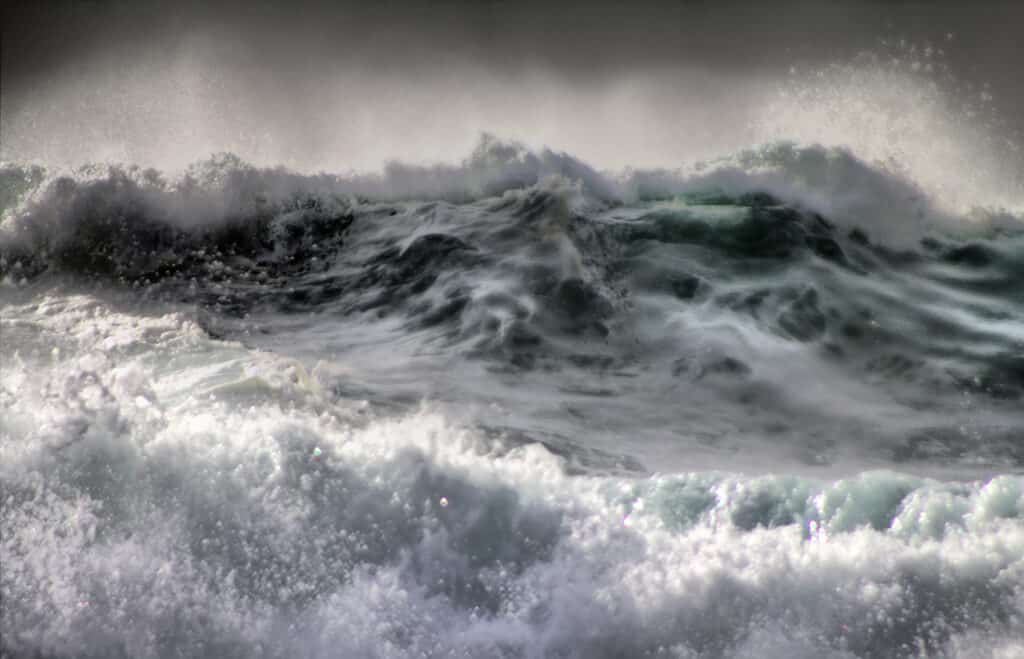
At least 25,000 people died in Saint Marcellus’s flood, also called the “Great Drowning of Men.”
©Maximillian cabinet/Shutterstock.com
The Johnstown Flood
After the disastrous failure of the South Fork Dam, which was on the south fork of the Little Conemaugh River, 14 miles upstream of the town of Johnstown, Pennsylvania, the United States, the Johnstown Flood, referred to as the Great Flood of 1889, happened on Friday,
May 31, 1889. After days of heavy rain, the dam broke, letting 14.55 million cubic meters of water flow out. The flood caused damage worth $17 million (or $534 million in 2022 dollars), killed 2,209 people, and for a short time had the same volumetric flow rate as the average flow rate of the Mississippi River.
The American Red Cross started a big relief operation with 50 volunteers and Clara Barton as its leader. Help for the victims came from the United States and eighteen other countries as well. After the flood, people tried to sue the dam owners for damages in court, but they were turned down. Due to this, strict liability replaced the fault-based legal system in the United States.
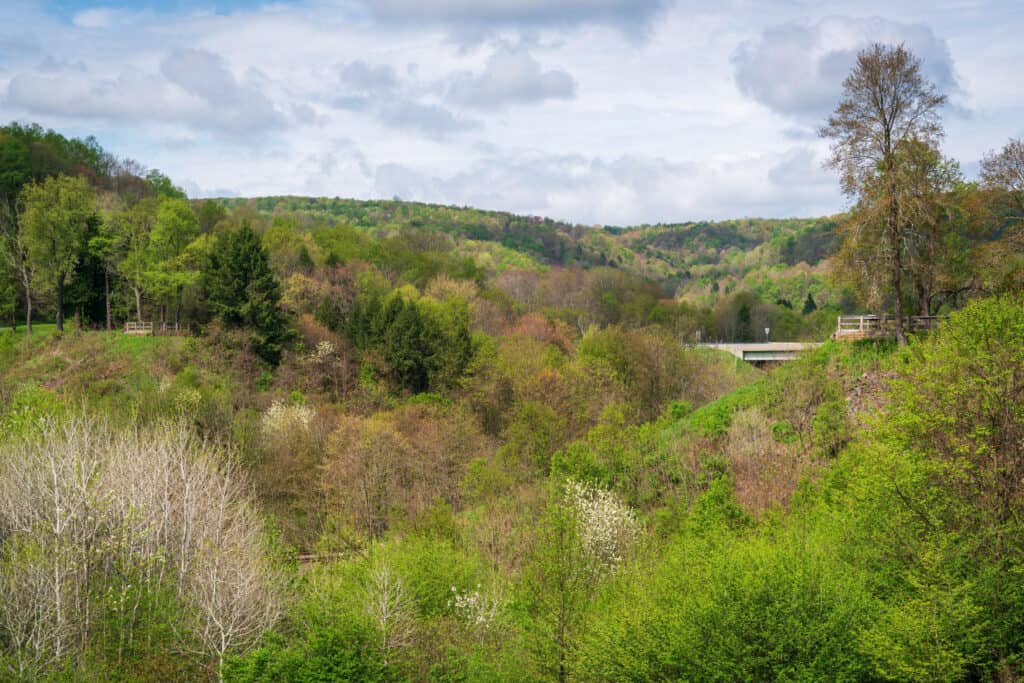
The Johnstown flood in Pennsylvania occurred on May 31, 1889. This is the National Memorial Historic Park.
©Zack Frank/Shutterstock.com
1887 Yellow River Flood
In Qing China, the Yellow River flood that started in September 1887 killed at least 930,000 people. Since it was China’s deadliest flood ever, it is one of the worst natural disasters in how many people died. Farmers who lived near the Yellow River for hundreds of years built dikes to keep it in. However, as time went on, the river flow increased because the farmers had to put silt on the riverbed to keep it from flooding.
Around September 28, 1887, this rising river broke through the dikes because of days of heavy rain. This caused a big flood. Since there is no one way to measure how bad a flood is, it usually uses damage, water depth, and the number of deaths to classify floods. Most people think the Yellow River floods broke through the dikes near Zhengzhou, Henan Province, in Huayuankou.
Because of the nearby low-lying plains, the flood quickly spread across Northern China, covering an area of about 50,000 square miles (130,000 km2) and hitting both cities and towns in the countryside. After the flood, two million people lost their homes. More people died because of the disease and lack of basic needs than from the flood itself. The Yangtze-Huai River flood of 1931 was one of the worst recorded floods. It may have killed as many as four million people. It is thought that at least three million people died.
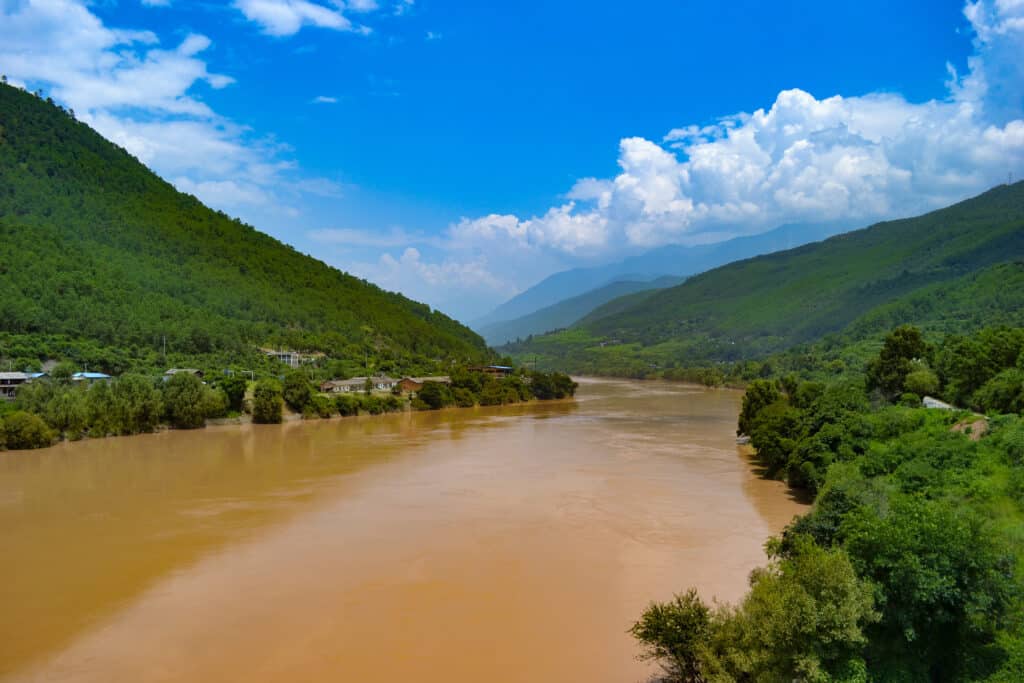
In Qing China, the Yellow River flood that started in September 1887 killed at least 930,000 people.
©Mo Wu/Shutterstock.com
Yangtze River Flood
The Yangtze-Huai River floods of 1931, also called the China floods of 1931, happened from June to August in Wuhan, Nanjing, and other large Chinese cities. The floods got so bad on August 25, 1931, that a dike along Lake Gaoyou broke.
Estimates of how many people died vary. John Lossing Buck led a field investigation for the University of Nanking right after the flood. He found that 50,000 people had died—less than a fourth of those who died in the first 100 days. The official story says that 140,000 people drowned and that 2 million people died during the flood, either from drowning or not having enough food.
The following year, from May 1932 to April 1933, there was a cholera pandemic with 31,974 deaths and 100,666 cases. A standard high estimate of 3.7 to 4.0 million deaths is what “kept the 1931 flood on sensationalist lists of the world’s worst disasters,” even though it is often on the list of the most devastating disasters in China by death toll.
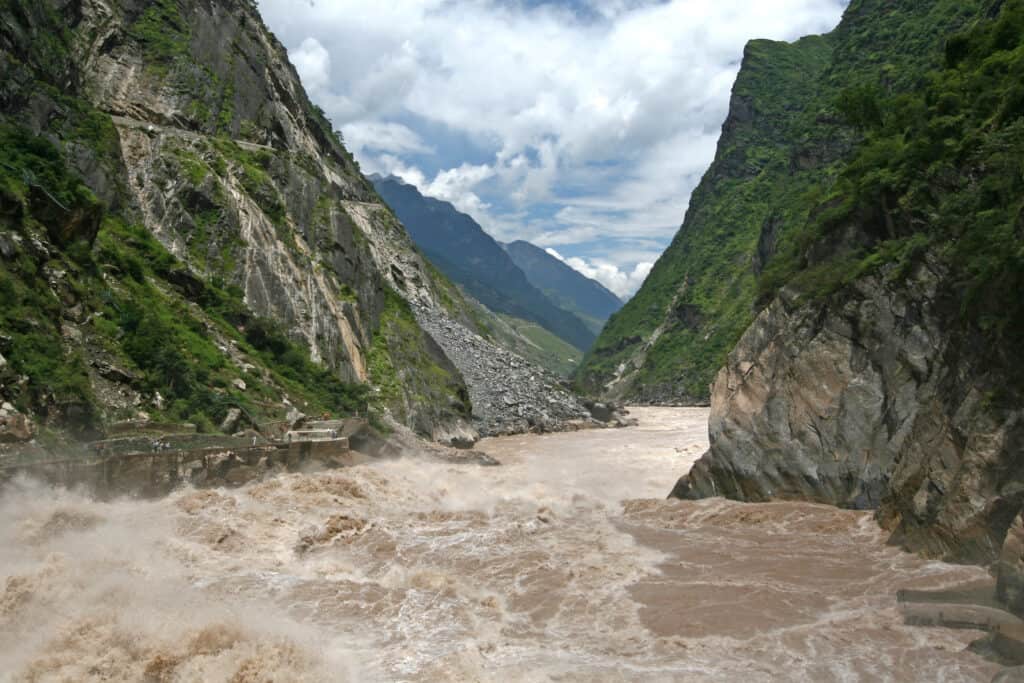
Raging waters in China.
©Hung Chung Chih/Shutterstock.com
1975 Banqiao Dam Failure
The Banqiao Dam disaster happened in Henan, China, in August 1975, when Typhoon Nina broke the Banqiao Dam and 61 other dams. The dam break caused an estimated death toll of between 26,000 and 240,000. It affected 10.15 million people and flooded 30 cities and counties over 12,000 square kilometers (or 3 million acres). The flood also caused between 5 million and 6.8 million homes to fall down.
A lot of people were thinking about the Cultural Revolution at the time that the dam broke. Most dams that failed during this disaster were built with help from experts from the Soviet Union or during the Chinese Great Leap Forward. When the dams were being built, the main goal was to keep water in. The ability of the barriers to stop floods was not given as much attention. The Great Leap Forward also hurt the quality of the dams.
The Banqiao Dam was built for a one-in-a-thousand-year rainfall event of 300 mm/day. However, near the typhoon’s center, more than a year’s worth of rain fell in just one day. Some experts have also said that the big steel melting during the Great Leap Forward and several policies from the “Learn from Dazhai in agriculture” campaign severely damaged the ecosystem and forest cover in the area, which was a significant cause of the flood. The government’s poor handling of the dam failure also worsened the flood.
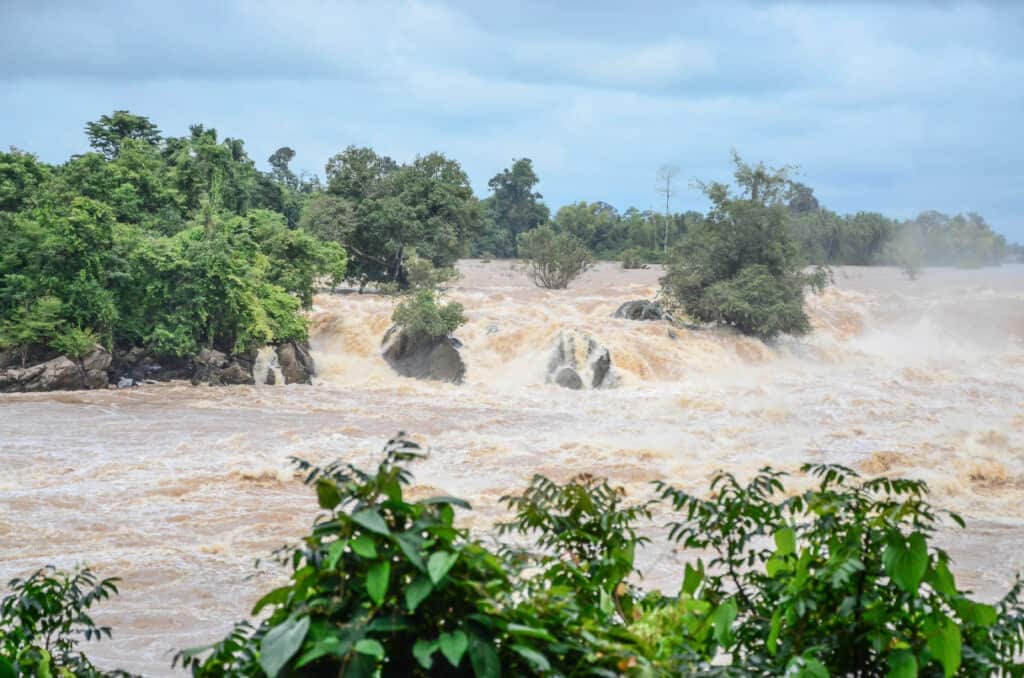
The Banqiao Dam break caused an estimated death toll of between 26,000 and 240,000.
©HANUMAN_168/Shutterstock.com
North Sea Flood
The storm surge affected the Netherlands, northwest Belgium, England, and Scotland. A storm tide was brought on by a combination of a high spring tide and a mighty European windstorm over the North Sea. Due to the wind, high tide, and low pressure, the sea flooded land up to 18.4 feet above mean sea level.
The majority of sea defenses facing the surge were overwhelmed, resulting in widespread flooding. The worst flood to hit England and Scotland during the 20th century was the North Sea flood of 1953.
Over 990 miles of coastline were damaged, and 160,000 acres were submerged due to over 1,200 seawall breaches. Over 30,000 people had to leave their homes due to flooding, and 24,000 properties suffered significant damage. The estimated cost of the damage was £50 million in 1953 dollars or about £1.2 billion in 2013 dollars.

A storm tide was brought on by a combination of a high spring tide and a mighty European windstorm over the North Sea.
©Alagz/Shutterstock.com
Bonus: Evidence of a Larger Flood?
PBS.org released a short documentary in 2022 as part of a series called “Be Smart” titled The Unbelievable Story of the Earth’s Most Epic Flood. In it, they examined an area of the northwestern United States in Missoula, Montana, where scientists believe a flood of epic proportions occurred 15,000 years ago. The location was once the home of a massive freshwater lake they refer to as the Glacial Missoula Lake. It was formed when the Cordilleran Ice Sheet stretched down from Canada and formed a giant wall of ice. This ice wall acted as a dam, with water gathering behind it over centuries of time, forming a massive lake.
Glacial Missoula Lake is thought to have covered an area of 3,000 square miles, with maximum depths of up to 600 meters, with average depths of around 300 meters. The wall of ice that contained this water is estimated to be 2,000 feet tall and 30 miles wide. With natural climate change, experts reason that the ice wall began to form cracks and holes. One day, the dam exploded, emptying the contents of the lake in a matter of a couple of days (when ice dams suddenly burst, it’s called Jöklhlaup in Icelandic).
The landscapes across much of the West can possibly be attributed to this great flood, such as the Grand Canyon. Even areas in the Great Plains with rolling hills could be the result of the fast-moving, destructive waters as they pushed outwards.
If these experts are correct, then this massive flood would be the largest that can be proved in history.
Summary of the 6 Biggest Floods Ever Recorded on Earth
Let’s take a look back at the top 6 most devastating floods ever recorded to have occurred on Earth.
| Rank | Flood Name | Location |
|---|---|---|
| 1 | Great Drowning of Men (1219) | British Isles, The Netherlands, Germany |
| 2 | The Johnstown Flood (1889) | Johnstown, Pennsylvania |
| 3 | 1887 Yellow River Flood | Qing, China |
| 4 | Yangtze River Flood (1931) | China |
| 5 | 1975 Banqiao Dam Failure | Henan, China |
| 6 | The North Sea Flood (1953) | The Netherlands, Belgium, England, and Scotland |
The photo featured at the top of this post is © HANUMAN_168/Shutterstock.com
Sources
- History.com / Evan Andrews / Published September 18, 2020 / Accessed September 18, 2022
- 911WaterDamageExperts.com / Mike Porco / Published March 18, 2022 / Accessed September 18, 2022
- EarthNetworks.com / Accessed September 18, 2022
- NationalGeographic.org / Accessed September 18, 2022
FAQs (Frequently Asked Questions)
Are floods worse than hurricanes?
More people die by floods each year in the United States than by tornadoes, hurricanes, or lightning combined.
Why do so many die from floods, and what does it cause?
Drowning will be the most frequent cause of death during a flood. Many of the drownings will have a trauma as a secondary cause. In addition to changing the landscape, floodwaters can cause riverbanks to erode and collapse. Pollutants like sewage, industrial chemicals, debris, and pesticides used on farms can contaminate floodwater. Floods most frequently cause infectious disease outbreaks linked to the weather. Flooding incidents increase the potential for the spread of cholera and hepatitis A, two waterborne diseases.
Thank you for reading! Have some feedback for us? Contact the AZ Animals editorial team.







